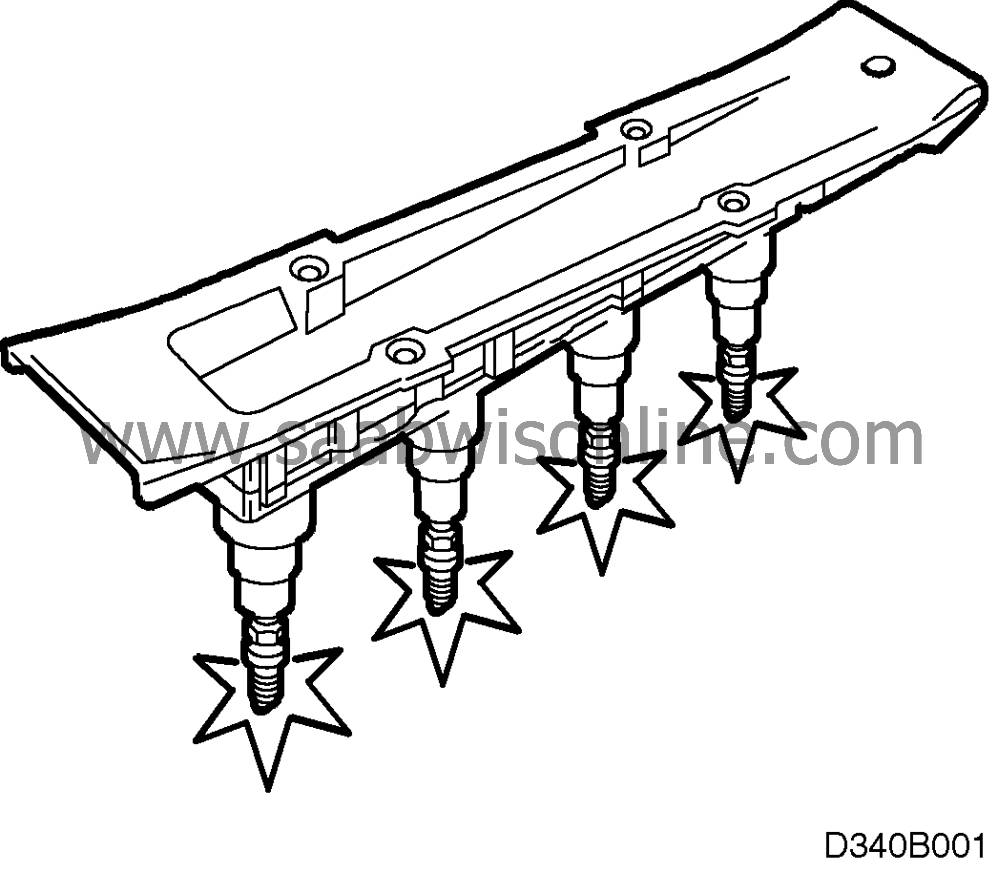Pre-replacement check of ignition discharge module
|
SERVICE INFORMATION
|
|
Bulletin Nbr:
|
340-1722
|
|
Date:
...........
|
APRIL 1997
|
|
Market:
|
ALL
|
|
|
Pre-replacement check of ignition discharge module
|
All cars with electronic ignition
In the past, engine problems caused by defective ignition discharge modules have
occurred and the faulty module has been duly replaced. Subsequent testing of replaced
modules has also confirmed that they were defective.
Over the years, the ignition discharge module has been continually developed and
improved, and is now an extremely reliable module. Yet far too many modules are being
replaced unnecessarily--tests on returned modules have shown that 70-80% of them
are functioning perfectly.
Because there is no diagnostic procedure for the ignition discharge module and it can
be difficult to measure certain of the module’s functions, we have produced a special
test module, Part. No. 83 95 279 (CA:30567748). This module, used together
with the other special tools and diagnostic procedures, now makes it possible to test the
ignition discharge module and thereby avoid most unnecessary replacements.
The test module is a standard ignition discharge module, except that ports
have been provided between the mounting holes on the sides of the module, a hole for
hanging the module has been provided, and the module is painted blue. The test module has
undergone comprehensive function checks both at the factory and on the road.
Test module: 83 95 279 (CA: 30567748)
 Warning
Warning
|
|
High-voltage ignition system--proceed with caution. Never touch the ignition discharge
module when the starter is running or during filament burn-off (when turning the ignition key to
OFF). The high voltages present can be fatal to people with weak hearts or pacemaker
implants.
|
|
|
|
|
|
Before starting work, determine the fault symptoms described by the
customer.
Most problems are caused by one of the following faults. Always check for these first
and rectify them, as necessary, before starting any additional diagnosis work. After each fault
has been rectified, check to see whether the fault symptoms are still there.
|
•
|
Module connections (both inside the module and in the electrical circuit)
|
|
|
-
|
Check for poor contact caused by bent, corroded or damaged connector pins. Also
check the power supply, ground, trigger signals and detector signals.
|
|
|
-
|
Correct electrode gap (a faulty gap setting can cause the engine to miss when under
a light or partial load, to misfire on idling or to be rough running at high rpm)
|
|
|
-
|
Check for signs of damage to the insulator (damage can lead to arcing during
increasing engine load)
|
|
|
-
|
Check for arcing due to damage or electrical leakage (check using test spark
plug)
|
|
|
-
|
Check for damaged rubber seals (often caused by chafing between the plug and the
rubber)
|
|
|
-
|
Check that the springs are in place in the coils and correctly seated.
|
If no faults are detected or if the fault symptoms persist, continue the diagnostic work
by fitting the test module.
If the fault symptoms disappear when the test module is fitted, the standard ignition
discharge module is defective and should be replaced.
If the symptoms still persist, continue diagnosis as specified under “Trionic
engine-management system”.


 Warning
Warning

